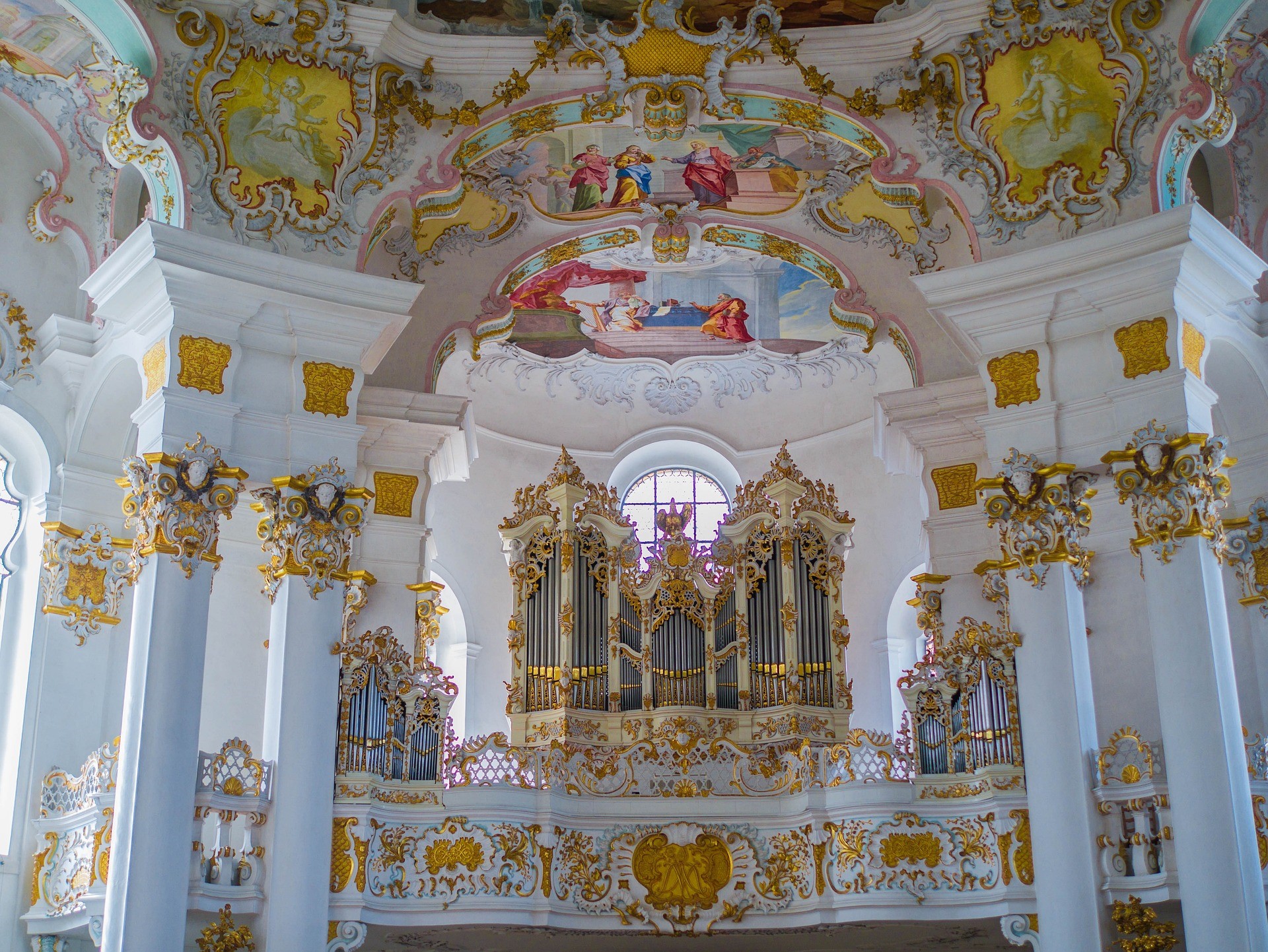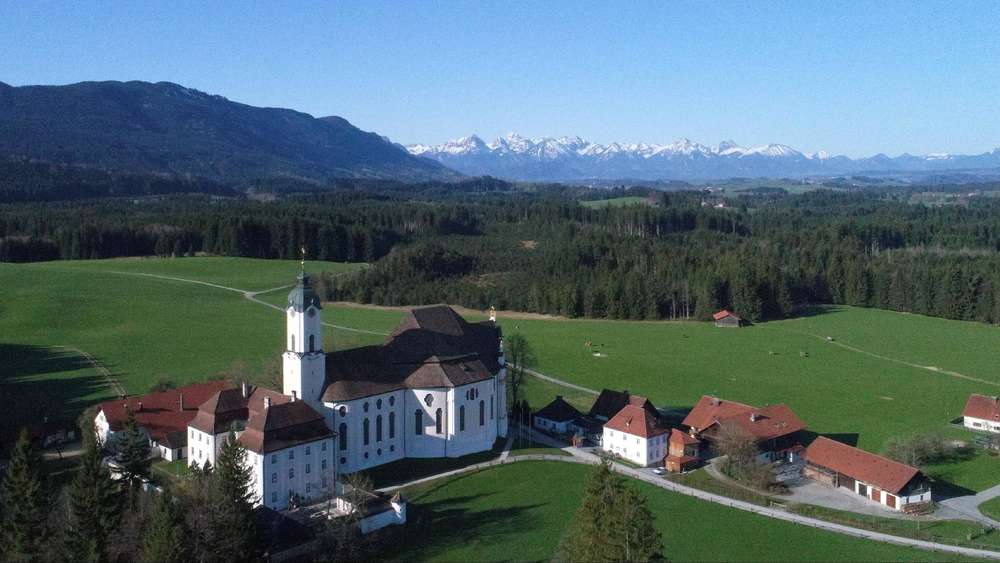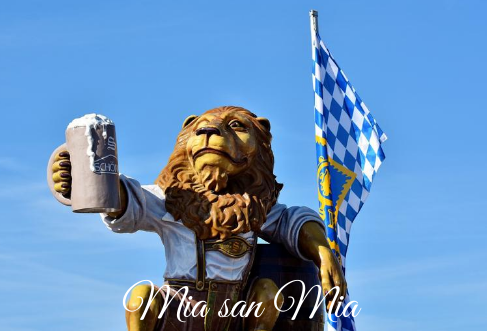The pilgrimage church " To the Scourged Savior on the Wies" - the Wieskirche for short - is the heart of the Pfaffenwinkel and the most beautiful church in the world , which was included in the UNESCO World Heritage List in 1984. Over a million visit “the masterpiece of human creativity” every year. It is evidence of a vanished cultural epoch , namely that of the Bavarian baroque .
AHA! cool,...
"Wooden figure "Scourged Savior" is found...
According to legend, a wondrous apparition was the reason for building a magnificent pilgrimage church on a rather inconspicuous meadow not far from the Upper Bavarian town of Steingaden in the 18th century, and today it is known all over the world . The statue made by Padres Straub and Scheiger was only used in the years 1732 - 1734 during the Good Friday procession and disappeared in 1735 first in the clothing room and later at the monastery innkeeper, where it was badly mauled by his children .
In 1738 the woman from Wiß, Maira Lori, asked for the figure for her evening prayers . One evening during the evening prayer, some tears are said to have flowed from the eyes of the statue of the "Scourged Saviour". These wondrous tears on June 14, 1738, which this slender, awkward-looking wooden figure is said to have shed, triggered the construction of the grandiose Wieskirche.
The two brothers Johann Baptist and Dominikus Zimmermann were commissioned with the actual construction in the years 1745 to 1754 . The official laying of the foundation stone on behalf of the Bavarian Elector Max Josef III. took place later on July 10, 1746 . With his church buildings, Dominikus Zimmermann had made a name for himself as an outstanding Baroque builder in Bavaria. The Wieskirche was to be his most mature and most beautiful work .
Beauty through artistic and theological creativity
Outstanding is the beauty expressed through the artistic and theological creativity in the Wieskirche. With the idea of rocailles, these shell ornaments so typical of Rococo, Zimmerman masterfully understood how to use them as an architectural principle in the construction of the Wieskirche. "In the Wies we stand in an intangible, unreal real space that gives us a glimpse of the actual reality: the altar sacrament and above the "heaven of grace" , so the art historian Hermann Bauer visibly fascinated.
On the first visit, one is truly overwhelmed by the bright light that streams through the church and makes the gold shine even brighter . Only gradually do the many details that are available in the Wieskirche open up to you. In the Wieskirche, the cheerful lightness and lively dynamics of the late Baroque are combined with the depth of what is probably the most important theme of Christianity, the redemption of man through the suffering and death of Christ.
The ambulatory is designed in such a way that it facilitates the circular passage of the pilgrims . Above the choir, galleries with arcades rise on both sides, which are supported by colored marble columns .
Unbelievable
"Bach" - compatible organ
The organ finds its origins in a two-manual slider chest organ from 1757.
In 1959 Gerhard Schmid from Kaufbeuren built a new organ with slide chests, mechanical play correction and pneumatic registration in the historic Rococo case. A swell was added. 600 pipes and a few registers were taken over from the historical organ from 1757. The result was an organ suitable for "Bach" for works such as "Brandenburg Concertos, St. John's Passion or St. Matthew's Passion."
What exactly is a "Bach"-compatible organ?
A Bach-compatible organ is an organ that is particularly suitable for the performance of works by the composer Johann Sebastian Bach . Here are five aspects that can make an organ suitable for Bach:
- Size and construction: A Bach-compatible organ should be large enough to adequately represent the variety of sounds and dynamics of Bach's works. It usually has multiple manuals and pedals , a variety of registers , and special construction to allow for clear articulation and a good balance between the different voices and timbres .
- Tuning : It should be built in a special tuning similar to meantone tuning . This tuning allows for clear intonation of the harmonic structures of Bach's music and ensures that all tones sound good in the harmonic context .
- It should have a wide range of registers that allow the different timbres and characteristics of Bach's music to be represented. Bach often used register combinations to achieve specific effects, and a Bach-ready organ should be able to accurately and nuancedly reproduce these register combinations .
- It should also have mechanical action , with the keys and registers connected directly to the valves that control the flow of air to the pipes. This allows for more precise and direct control over the organ's timbre and expression, which is particularly important for adequately representing Bach's complex and detailed music .
- A large pedal section is necessary to adequately represent the many pedal voices and passages in Bach's music. Bach was a master at writing for the pedal and often used it to underline bass lines and rhythmic patterns .
- In addition, a Bach-ready organ should have a clear and projecting sound quality that allows the complex polyphonic structures of Bach's music to be heard clearly. Bach often wrote music with many voices and dense textures , and a Bach-ready organ should be able to distinguish each voice clearly and distinctly , so that the complexity and beauty of his music can be fully appreciated.
Playability: A Bach-compatible organ should be built in such a way that it allows fast and precise playability . Bach's music often calls for fast runs, intricate phrasing , and precise pedaling , and a well-playable organ can help meet these musical demands .
Historical authenticity : Ideally, an organ suitable for Bach should be historically authentic, ie it should be built in the same way as organs were built in Bach's time. This can mean using historical building techniques, materials, and tuning to create an organ that resembles the organ Bach played. Such an organ can help to interpret Bach's music in a historical context.
What's exciting to see
Rococo architecture in perfection
The Wieskirche is an excellent example of Rococo architecture with a façade decorated with decorative elements such as shells, angel heads, ornaments and coats of arms.
The Ceiling Frescoes: The church has an impressive ceiling fresco, painted by the painter Johann Baptist Zimmermann, depicting the heavenly scene .
The stucco work: The Wieskirche also has beautiful stucco work done by the famous artist Dominikus Zimmermann .

Rococo architecture in perfection

Orgel der Wieskirche
The organ
The organ in the Wieskirche, also known as the " high altar organ ", is considered to be one of the most important organs of the German Baroque period . It was completed in 1754 by the organ builder Johann Nepomuk Holzhey and has largely been preserved in its original condition to this day. The organ has 2 manuals and a pedal as well as a total of 45 registers and over 3000 pipes. What makes the organ special, however, is not only its size and the number of registers, but also its tonal variety and its special case.
The organ case is ornately decorated with numerous carvings and gilded ornaments . The front pipes are also artistically designed and contribute to the impressive appearance of the organ . The variety of sounds of the organ is achieved through the use of different playing techniques, such as the use of reed registers . This allows the organ to produce soft, soaring sounds as well as powerful, sonorous tones .
The exceptional geographic location
The Wieskirche, officially the pilgrimage church of the Scourged Savior on the Wies , is situated in the midst of an idyllic landscape in the Bavarian Alpine foothills. It is located about 70 kilometers southwest of Munich and is surrounded by rolling hills and green meadows.

The location of the Wieskirche is considered to be particularly attractive, as it is in a remote valley and surrounded by breathtaking natural scenery . It was built on a hill that rises above the Wies, a small river. This gives you a wonderful view of the surrounding mountains and the valley from the church.
The location was also of great importance for its formation and its history as a pilgrimage church. In the 18th century, the region around the Wieskirche was still very rural and characterized by poor farmers . The pilgrimage to the Wieskirche offered people an opportunity to escape from their hard everyday life and to find comfort and hope in the idyllic surroundings of the church.
Today, the Wieskirche is not only an important religious center but also a tourist attraction of international standing . The church's unique location helps it attract nearly a million visitors and pilgrims from around the world each year, drawn in by its beauty and charm.
